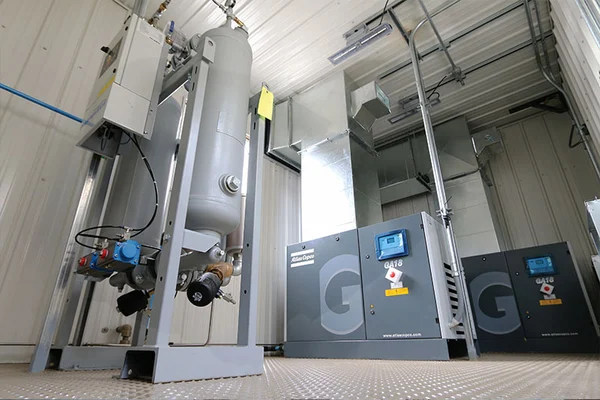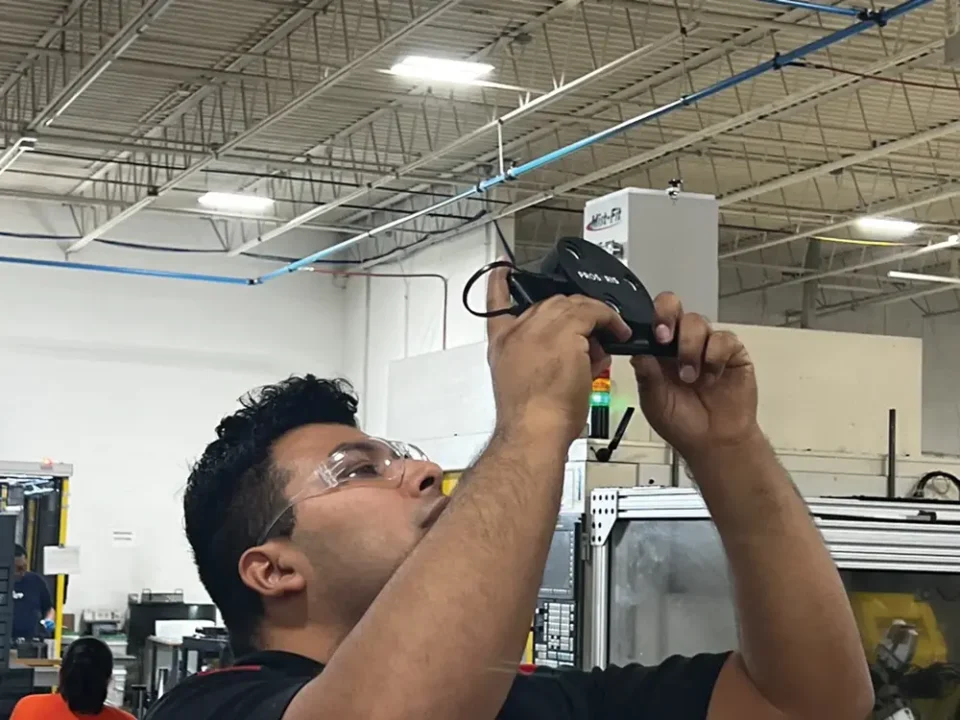Compressed air systems are the backbone of countless industries, powering tools, machinery, and processes with precision. However, inefficiencies in air distribution can lead to energy waste, higher costs, and reduced performance. Optimizing these systems isn’t just about saving money—it’s about enhancing reliability and sustainability.
An efficient compressed air distribution network ensures consistent pressure, minimizes leaks, and maximizes energy use. With expert strategies and proper system design, businesses can unlock significant improvements in productivity and operational efficiency. Understanding these key tips is the first step toward a smarter, more cost-effective system.
The Importance of Proper System Layout in Compressed Air Efficiency
Effective system layout ensures consistent airflow and energy efficiency in compressed air systems. Poorly designed layouts create pressure drops, increase energy demand, and lead to higher operating costs. Aligning distribution lines properly helps maintain uniform pressure and supports equipment functionality.
Minimized pressure drop in a system reduces the energy required for air delivery. For example, shorter pipelines, appropriate diameters, and proper connections limit friction losses. Strategic placement of main headers and branches enhances performance by promoting efficient air flow paths.
System maintenance becomes simpler with an optimized layout. Properly structured layouts improve accessibility to components and reduce downtime during inspections or repairs. Operators can also identify potential issues faster, decreasing unplanned outages.
Layouts that consider future scalability make long-term benefits achievable. Industries adopting modular designs can expand distribution systems without expensive overhauls. Using expert tips for efficient compressed air distribution, such as those shared by Fluid-Aire Dynamics, ensures designs meet both current and future operational demands.
Tips for Reducing Energy Loss in Compressed Air Systems
- Identify and Repair Air Leaks
Air leaks cause significant energy loss in compressed air systems. Regularly inspect connections, valves, and joints to locate leaks. Ultrasonic detectors or soapy water tests can identify even small leaks. - Optimize System Pressure Levels
Reducing the operating pressure to the lowest effective level minimizes energy consumption. Maintaining a consistent and efficient pressure range ensures stable operation while avoiding excessive energy use. - Invest in Proper Piping Design
Employ loop-style or ring piping layouts to ensure even pressure distribution. Shorter pipelines and appropriate pipe diameters reduce pressure drops and energy losses. - Install Energy-Efficient Components
Use energy-efficient air dryers, filters, and compressors. High-performance components lower energy demands while maintaining optimal airflow. - Conduct Routine Maintenance
Clean filters, inspect drains, and maintain lubrication levels regularly. Well-maintained systems operate efficiently and reduce unnecessary energy loss. - Use Demand-Side Management
Implement demand controllers to match air output with system requirements. Avoid overloading compressors when fewer tools or machines are running. - Minimize Unnecessary Air Usage
Restrict compressed air usage to essential applications. Replace inappropriate uses, like open blowing, with alternatives such as fans or blowers. - Install Pressure Regulators
Pressure regulators at end-use points maintain accurate pressure levels for specific equipment. This prevents excess air consumption and energy waste. - Implement Heat Recovery Systems
Capture waste heat from compressors to power other processes, such as space heating or water heating. Recovered energy enhances overall efficiency. - Train Operators Effectively
Educate system operators on best practices for efficient compressed air use. Proper training reduces misuse and ensures the system operates as intended.
By incorporating these strategies, businesses can both reduce energy loss and enhance the efficiency of their compressed air networks.

Choosing the Right Piping Materials for Distribution Networks
Selecting appropriate piping materials ensures durability, efficiency, and reduced energy losses in compressed air systems. Poor material choices can lead to leaks, rust, and pressure drops, impacting overall system performance.
- Metallic Piping Options: Materials like aluminum and stainless steel are corrosion-resistant and lightweight, making them ideal for distribution networks. For high-pressure systems, carbon steel offers robustness but requires protective coatings to prevent corrosion.
- Non-Metallic Piping Alternatives: Polyethylene (PE) and polyvinyl chloride (PVC) materials possess low friction coefficients, improving airflow efficiency. PE piping is flexible and suitable for low-pressure applications, while PVC is cost-effective but should only be used where temperatures remain stable.
- Hybrid Approaches: Combining metallic and non-metallic materials provides the benefits of strength and flexibility. For instance, a stainless steel main line with a PE branch setup can handle variable operational demands.
- Considerations for Chemical Compatibility: Piping materials should resist degradation from lubricants, moisture, or contaminants in the compressed air. Aluminum and stainless steel excel under diverse chemical exposures.
- Diameter and Wall Thickness: Proper sizing minimizes pressure drops and energy losses. Materials with higher tensile strength, like steel or aluminum, allow thinner walls without compromising performance.
By choosing the right materials, businesses enhance system efficiency and longevity. These decisions, aligned with expert Tips for Efficient Compressed Air Distribution, create robust networks supporting operational reliability.
How to Identify and Eliminate System Leaks Effectively
Detecting and addressing air leaks is crucial for maintaining efficient compressed air distribution. Undetected leaks can account for up to 25-30% of compressed air usage, leading to significant energy waste and increased operational costs.
Steps to Identify Air Leaks
- Conduct Audits Regularly: Use ultrasonic leak detectors to scan the system. These devices pinpoint leaks in hard-to-reach areas like fittings and pipe joints.
- Inspect Connections and Valves: Check coupling points, pipe threads, and control valves. Leaks often occur where components join or when valves are not fully sealed.
- Monitor Pressure Drops: Identify sections with unexplained pressure loss using flow meters. A drop could signal leaks or obstructed pathways.
Methods for Eliminating Leaks
- Repair Damaged Components: Replace worn gaskets, seals, and faulty valves. These inexpensive fixes often yield substantial energy savings.
- Seal Poorly Joined Sections: Use industrial-grade thread sealants or tape for secure, leak-proof connections.
- Upgrade to Quality Materials: Transition to corrosion-resistant piping, such as aluminum, to prevent future leaks and ensure durability.
- Perform Proactive Maintenance: Establish regular inspection schedules. Preventive checkups ensure leaks are fixed promptly before escalating.
Benefits of Leak-Free Systems
A leak-free compressed air distribution system optimizes energy efficiency and reduces unnecessary costs. Enhanced system reliability minimizes downtimes and supports consistent pressure levels critical for operational tasks. Businesses utilizing tips for efficient compressed air distribution, like those shared by experts such as Fluid-Aire Dynamics, achieve long-term sustainability while meeting performance goals.
Strategies for Optimizing Air Flow in Industrial Settings
Ensuring efficient airflow in industrial compressed air systems is essential to minimize energy consumption and enhance performance. Optimized airflow improves system reliability and reduces operational costs.
- Reduce Pressure Drops: Maintain consistent pressure by designing pipelines with proper diameters and avoiding unnecessary bends or restrictions. Shorter, wider pipes help maintain smooth airflow and limit energy losses.
- Balance Demand and Supply: Align airflow supply with usage patterns by installing flow controllers and strategically placing receivers near high-demand areas. This approach prevents over-pressurization and ensures stable performance.
- Install Proper Piping Configurations: Use looped or grid-style layouts to distribute compressed air evenly. These configurations create redundancy and maintain consistent airflow, even during equipment failures.
- Eliminate Turbulence: Minimize turbulence by ensuring connections are properly aligned and avoiding mismatched pipe materials. Smooth airflow reduces wear on system components and enhances efficiency.
- Monitor and Control Velocity: Keep air velocity under 30 feet per second to reduce friction and pressure drops. Use flow measurement devices to identify areas where velocity exceeds this limit for corrective action.
- Incorporate Advanced Monitoring Tools: Include sensors and monitoring systems to track real-time airflow and detect inefficiencies. These tools provide data for analyzing performance and optimizing system functionality.
Efficiently managing airflow supports sustainability goals and operational reliability. Fluid-Aire Dynamics, a leader in compressed air systems, provides solutions aligning with these strategies, ensuring optimized distribution and energy savings.
Integrating Monitoring Systems for Real-Time Performance Analysis
Incorporating advanced monitoring tools ensures real-time performance tracking in compressed air distribution systems. These systems provide critical data on pressure levels, flow rates, and energy consumption, enabling operators to identify inefficiencies or irregularities instantly. Continuous monitoring reduces downtime by detecting issues before they escalate, improving system reliability and operational efficiency.
Installing intelligent sensors at key points within the distribution network facilitates detailed performance analysis. By observing variables such as air velocity and system load, operators can make data-driven adjustments to optimize airflow and minimize energy losses. Monitoring tools also help verify the effectiveness of implemented strategies like repairing leaks or optimizing pressure levels.
Modern software platforms integrate seamlessly with monitoring systems and present data in user-friendly dashboards. These platforms generate actionable insights and trend analyses, simplifying system diagnostics. Businesses can utilize these insights to prioritize maintenance efforts and track the return on investment (ROI) of energy-saving measures.
Real-time monitoring aligns with recommendations from industry leaders like Fluid-Aire Dynamics. Adopting these solutions supports long-term strategies for efficient compressed air distribution, ensuring consistent performance and reduced operational costs.
Maintaining Balance Between Supply and Demand in Compressed Air Usage
Efficient compressed air distribution is vital for reducing energy waste and ensuring smooth operations. By adopting strategies like proper system design, routine maintenance, and advanced monitoring, businesses can enhance both reliability and sustainability in their operations.
Investing in durable materials, addressing leaks, and optimizing airflow creates a robust system that meets current demands while allowing for future scalability. These efforts not only cut costs but also support long-term productivity and environmental goals. Implementing expert-recommended practices ensures compressed air systems operate at peak efficiency, delivering measurable benefits across industries.

